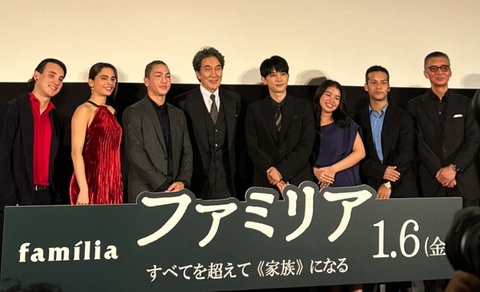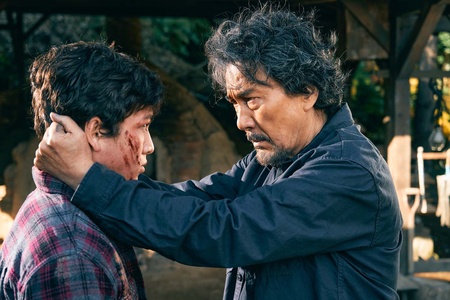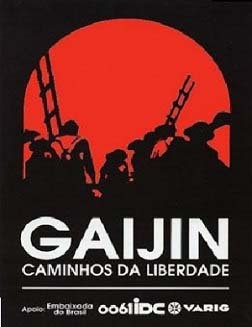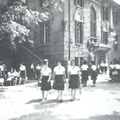
"Gaijin" depicts Brazilian society through the eyes of Japanese immigrants
"It's like a story that transposes the hardships of Japanese immigrants in Brazil to modern Japan," I thought after watching the online preview of the movie "Família" (directed by Izuru Narushima, distributed by Kino Films). It has been showing at Shinjuku Piccadilly and other theaters nationwide since January 6th. Unfortunately, it cannot be seen outside of Japan.
The film is a solid human drama in which the well-known actors Koji Yakusho and Ryo Yoshizawa play father and son, overcoming their various differences to create a "modern family." The main roles are played by Brazilians living in Japan, who were selected through auditions.
While watching this preview, I felt that it had something in common with the Brazilian film "GAIJIN・Caminhos da Liberdade" (made in 1978, directed by Yamazaki Chizuka, hereafter referred to as "Gaijin").
"Gaijin," which was based on director Yamazaki's grandmother, a third-generation Japanese-Brazilian, depicts the story of a Japanese woman who emigrates to Brazil and overcomes the many hardships she faces on the coffee plantation where she is assigned to work, living a strong life there.
He is deceived into moving to Brazil, believing that "there is a money tree in Brazil," but ends up suffering slave-like working conditions on the plantations. As the farm's bodyguards use unreasonable violence against him, he sneaks out at night and goes to the city, where the film ends with a hint that he throws himself into the labor movement.
The film was a hot topic for its realistic portrayal of the persecution of Japanese immigrants, a minority group, during the military regime, when many restrictions were imposed on cultural activities.
In a column for the Japan-Brazil Central Association, Tsukamoto Kyoko, the film's lead actress, looked back on the situation at the time, saying, "Under the military regime, the cast and staff were all anti-establishment, and anti-establishment scenes and lines were casually included in the film. The film ends with a scene of a labor movement, but as expected, it was difficult to get permission for this scene, and I remember filming it under police surveillance. Although the main story was about Japanese immigrants, I think it was because it depicted social issues in Brazil that it won awards at many film festivals, including the Cannes Film Festival" (" The Production Site of Brazilian and Japanese Films and TV Dramas ", Japan-Brazil Central Association).
As Tsukamoto comments, at the time of production, 70 years had passed since the first immigrant ship, Kasato Maru, and Japanese immigrants had become a part of Brazilian society, so the film's approach of depicting society-wide issues through that perspective was highly praised.
The film won the Cannes Film Festival award for Chizuka Yamazaki, a 29-year-old woman at the time of production and the first Japanese-Brazilian director to do so, and it became a work that instantly made her presence known in the Brazilian film industry. There is a video on YouTube , but it is entirely in Portuguese because it was made during the military regime, when even foreign language broadcasts were banned.
It's like an inside-out existence
Meanwhile, the employment of Japanese Brazilians in Japan started to boom after the Immigration Control Act was revised in 1990. Just before the Lehman Shock in 2008, over 300,000 people came to Japan to work. "Familia" was made more than 30 years after that.
This "30 years" is the period during which the generation born and raised in Japan will come of age and emerge as leaders. This generation is the one that appears in the film.
The model for this film is the Homi Danchi housing complex in Aichi Prefecture, which is in an area where Toyota Motor Corporation-related factories are concentrated. It is a unique area with over 60 mammoth apartment buildings, 3,900 homes and a population of about 7,000, of which nearly half are foreigners, the overwhelming majority of whom are Brazilians.
In the past, "Gaijin" depicted the harsh, slave-like labor on coffee plantations that the majority of Japanese immigrants experienced, while "Familia," which is set in modern times, depicts the daily lives of Brazilians living in Japan working as foreign laborers in an automobile factory.
None of the Japanese actors who appeared in Gaijin were well-known, and many actual Japanese immigrants appeared as extras, but the Brazilian side was played by a number of impressive actors, including Antonio Fagundes.
"Familia" stars a Brazilian resident in Japan who normally works in a factory and is trying acting for the first time. The Japanese cast includes Yakusho Koji in the lead role, with other big-name actors including Yoshizawa Ryo, Sato Koichi, Matsushige Yutaka, Nakahara Takeo, and Muroi Shigeru in supporting roles.

"Gaijin" depicts a Japanese immigrant being violently bullied by farm guards, while "Familia" features a scene in which the immigrant is beaten up by an anti-gang group, which reminded me of the case of El Curano, a boy who was beaten to death in Komaki City, Fukushima Prefecture, in October 1997.
"Gaijin" depicts a man fleeing a coffee farm in the middle of the night to gain freedom and find his place in the city, while "Familia" depicts a man who struggles to find his place in Japanese society. Both films depict foreign immigrants searching for how to live in their new country and the people of that country who sympathize with them.
It is not uncommon for Japanese films to have scenes in which people speak English, but it is unusual in that the majority of the characters in "Familia" are non-white foreigners or Japanese descendants, and most of the dialogue is in Portuguese. It is also interesting in the sense that it is the first time that the Brazilian community in Japan, which is unknown to ordinary Japanese people, is depicted as part of Japanese society.
The president of Toho Films rejected the "gaijin" roadshow
When I interviewed Director Yamazaki in June 2018, I heard some interesting follow-up stories about “Gaijin.”
"When I screened the film at the Tokyo Film Festival as 'Gaijin' in 1980, I visited Japan convinced that the film would absolutely be well received in Japan. However, after the screening, I had a chance to meet with the president of Toho Films, who told me, 'We have no intention of introducing this film in Japan.' He told me that very clearly. At that moment, I thought I was going to go crazy. I found out later that the historical fact of 'immigration' is taboo in Japan. After all, many people emigrated because they had nothing to eat, no jobs, and could not make a living. So I think Japanese people consider it a shameful part of their history," Yamazaki said, shaking his head.
In Japan in the 1980s, there may have been an atmosphere of wanting to hide even the fact that 250,000 Japanese had emigrated to Brazil.
However, we are now in an era where the descendants of these Japanese immigrants are creating communities within Japan and settling down and living permanently, and commercial films that depict Japanese society through their existence are being released in theaters.
I feel that there is something about the movie "Familia" that makes you feel as if the wheels of history are turning.
© 2023 Masayuki Fukasawa






